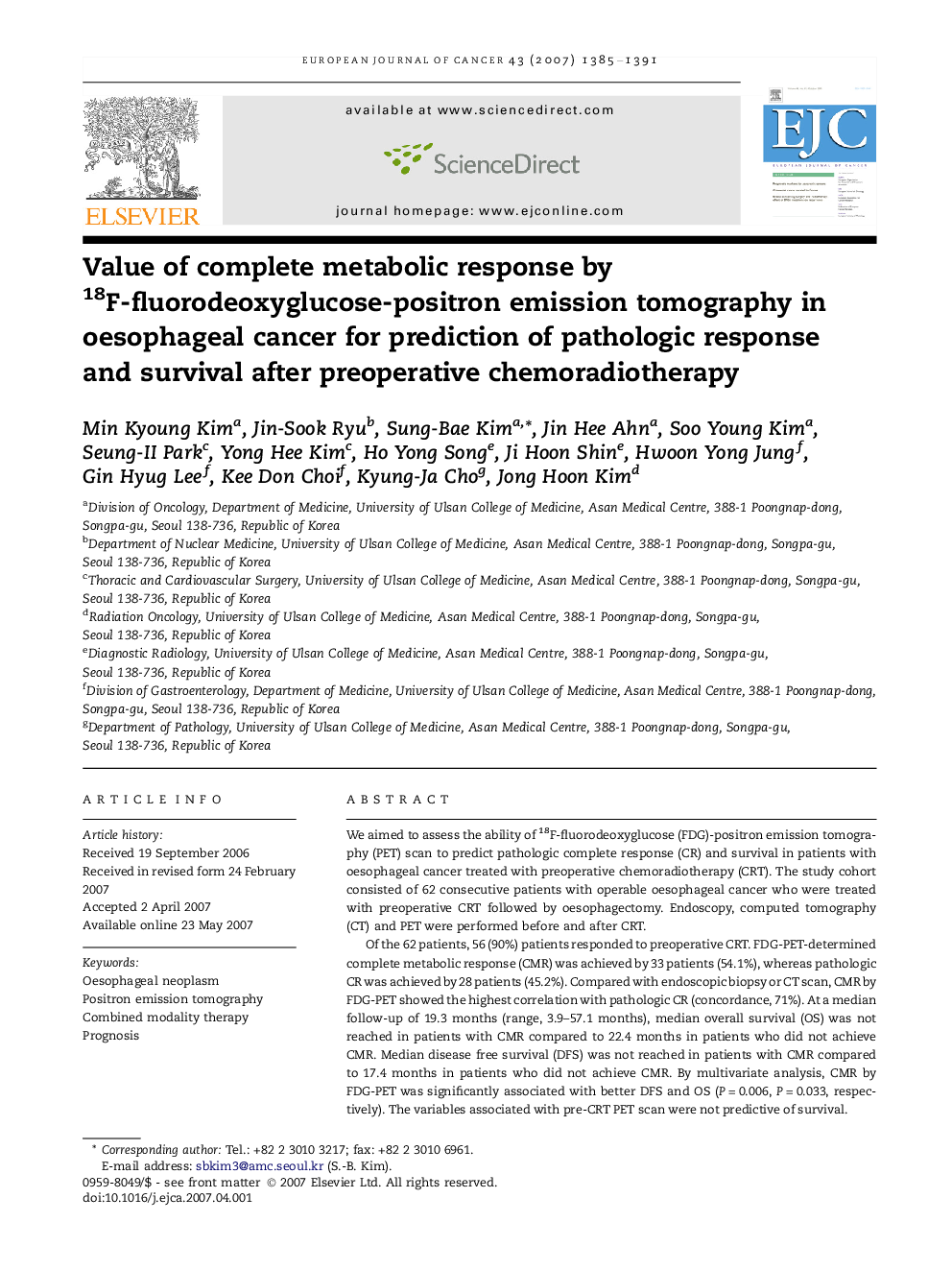| Article ID | Journal | Published Year | Pages | File Type |
|---|---|---|---|---|
| 2126059 | European Journal of Cancer | 2007 | 7 Pages |
We aimed to assess the ability of 18F-fluorodeoxyglucose (FDG)-positron emission tomography (PET) scan to predict pathologic complete response (CR) and survival in patients with oesophageal cancer treated with preoperative chemoradiotherapy (CRT). The study cohort consisted of 62 consecutive patients with operable oesophageal cancer who were treated with preoperative CRT followed by oesophagectomy. Endoscopy, computed tomography (CT) and PET were performed before and after CRT.Of the 62 patients, 56 (90%) patients responded to preoperative CRT. FDG-PET-determined complete metabolic response (CMR) was achieved by 33 patients (54.1%), whereas pathologic CR was achieved by 28 patients (45.2%). Compared with endoscopic biopsy or CT scan, CMR by FDG-PET showed the highest correlation with pathologic CR (concordance, 71%). At a median follow-up of 19.3 months (range, 3.9–57.1 months), median overall survival (OS) was not reached in patients with CMR compared to 22.4 months in patients who did not achieve CMR. Median disease free survival (DFS) was not reached in patients with CMR compared to 17.4 months in patients who did not achieve CMR. By multivariate analysis, CMR by FDG-PET was significantly associated with better DFS and OS (P = 0.006, P = 0.033, respectively). The variables associated with pre-CRT PET scan were not predictive of survival.In conclusion, CMR by FDG-PET has a significant correlation with pathologic CR and can predict the long-term outcome in oesophageal cancer patients undergoing CRT. Although surgery is standard treatment for respectable oesophageal cancer, currently even in patients with CMR, the addition of 18F-FDG-PET could be used to select the patient subgroup not requiring surgery.
